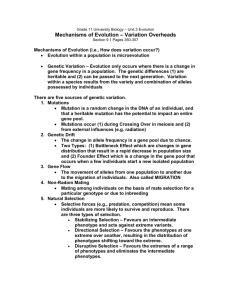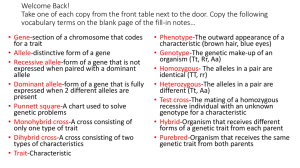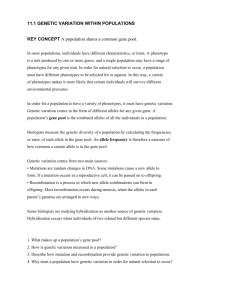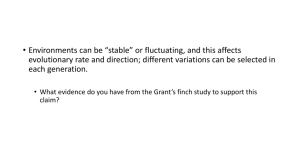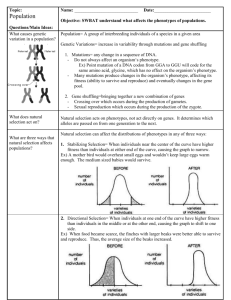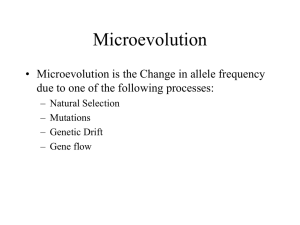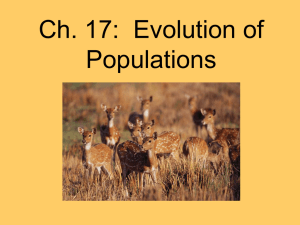16-1 Genes and Variation
advertisement
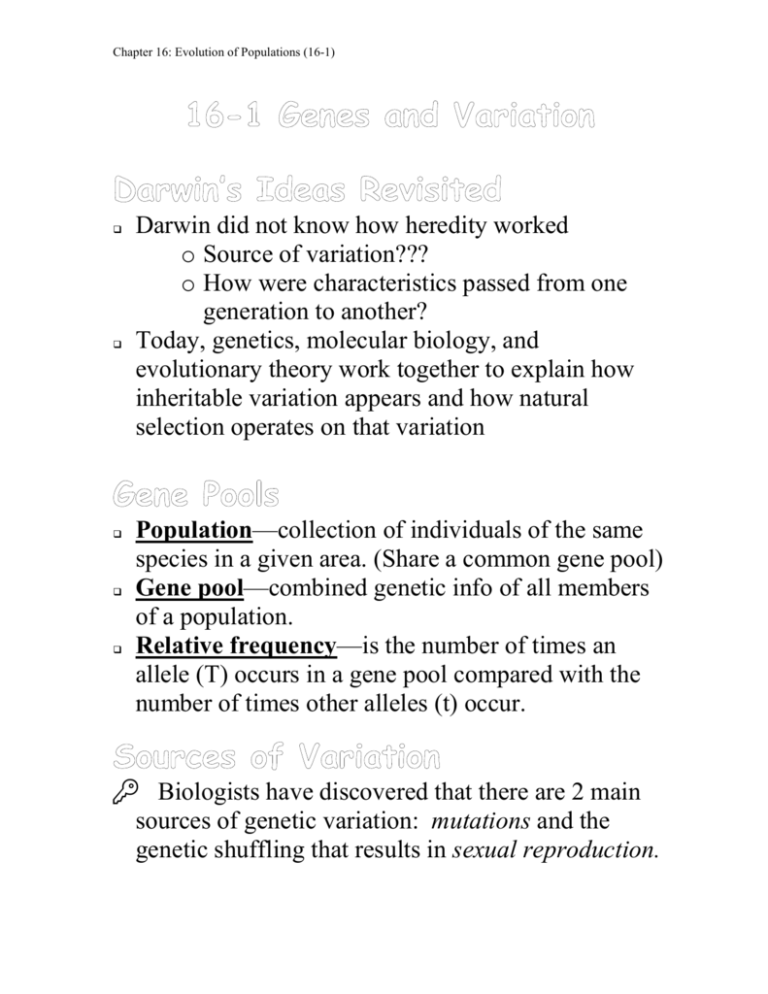
Chapter 16: Evolution of Populations (16-1) Darwin did not know how heredity worked o Source of variation??? o How were characteristics passed from one generation to another? Today, genetics, molecular biology, and evolutionary theory work together to explain how inheritable variation appears and how natural selection operates on that variation Population—collection of individuals of the same species in a given area. (Share a common gene pool) Gene pool—combined genetic info of all members of a population. Relative frequency—is the number of times an allele (T) occurs in a gene pool compared with the number of times other alleles (t) occur. Biologists have discovered that there are 2 main sources of genetic variation: mutations and the genetic shuffling that results in sexual reproduction. Chapter 16: Evolution of Populations (16-1) Mutations Mutations (change in DNA sequence) can affect an organisms fitness—ability to survive and reproduce in its environment Gene Shuffling Each gamete contains a different set of genetic information Crossing over also increases variation Slightly different genotypes can dramatically affect phenotype. Sexual reproduction does NOT change the relative frequency of an allele. The number of phenotypes produced for a given trait depends on how many genes determine the trait. Single-gene trait—only 2 alleles—distinct phenotypes Polygenic traits—2 or more genes—many phenotypes (averages and extremes), results in a bell shaped curve.
